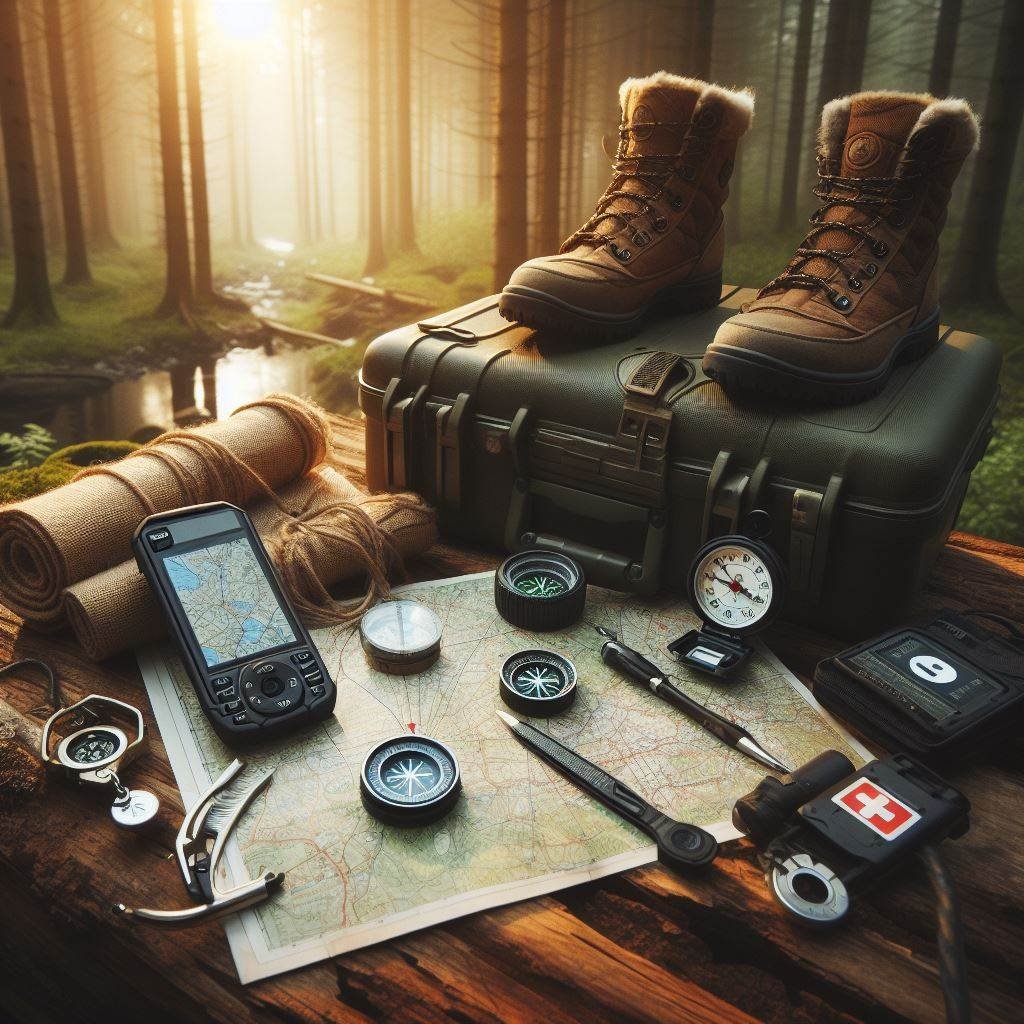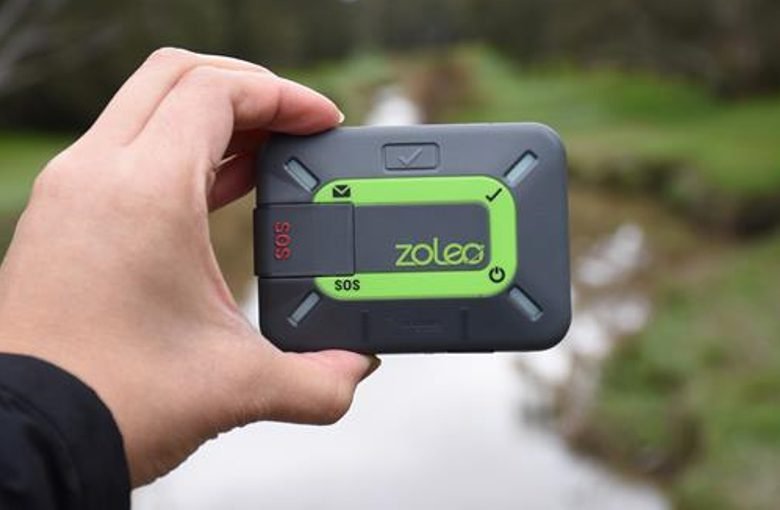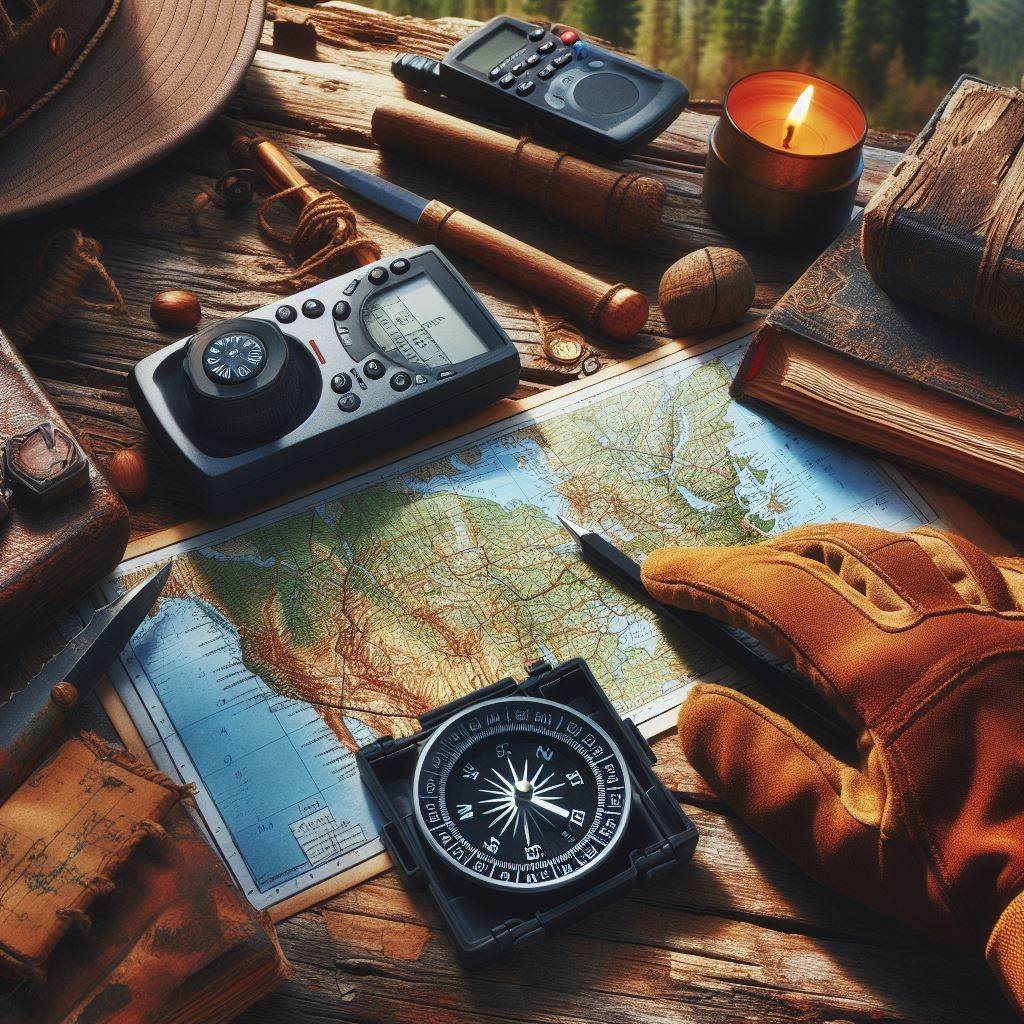Table of Contents
The wilderness beckons with it’s vast landscapes, untouched beauty, and boundless opportunities for adventure. But venturing into the backcountry requires careful preparation and an understanding of how to find your way, even when trails disappear.
Mastering wilderness navigation is crucial for ensuring a safe and enjoyable outdoor experience, whether you’re embarking on a day hike or a multi-day backpacking trip.
In this Outdoor Tech Lab guide on wilderness navigation 101, we’ll explore the essential gear, techniques, and strategies to help you stay safe and make the most of your wilderness adventures.
Basic Map and Compass Skills
- Interpreting Topographic Maps: Understand contour lines, scale, declination, and map symbols.
- Orienting the Map: Learn to align your map with the surrounding terrain using features and your compass.
- Taking and Following Bearings: Master the art of using your compass for accurate navigation.
- Triangulation: Determine your position by using at least three known landmarks.

GPS Devices and Compasses: Your Navigation Essentials
1. GPS Devices
In the era of modern technology, a GPS device is an indispensable tool for wilderness navigation. These handheld units use satellite signals to pinpoint your location, track your progress, and guide you along pre-planned routes or back to your starting point.
When selecting a GPS device for outdoor use, look for features like waterproofing, long battery life, and the ability to load topographic maps.
2. Compasses
While GPS devices are incredibly useful, they should never be your sole means of navigation. A good old-fashioned compass is a reliable backup and a must-have item in any wilderness traveler’s kit.
Compasses come in various styles, from basic models to those with built-in adjustments for declination (the difference between true north and magnetic north).
Learn how to use your compass effectively, and always carry a backup in case your primary compass fails.
Navigation via Satellite: Understanding Celestial Cues
While GPS and compasses are essential tools, there’s another celestial navigation aid that’s been used for centuries: the sun, moon, and stars.
By understanding how to read the position of these heavenly bodies, you can determine your general direction and use them as a backup navigation method.
1. The Sun
During the day, the sun’s position can provide a reliable directional reference. In the Northern Hemisphere, the sun travels from east to west, reaching its highest point in the south at noon.
By tracking the sun’s movement, you can get a basic sense of cardinal directions.
2. The Moon
At night, the moon can be used for navigation in much the same way as the sun. However, keep in mind that the moon’s position changes from night to night, so you’ll need to adjust your calculations accordingly.
3. The Stars
For more advanced celestial navigation, familiarize yourself with the constellations and their positions relative to the North Star (Polaris).
This knowledge can help you determine your approximate location and direction, even on cloudless nights.
Navigation via Satellite Devices
- Personal Locator Beacons (PLBs): These devices transmit an emergency signal to search and rescue teams in life-threatening situations.
- Satellite Communicators: Enable two-way messaging and can provide location tracking, weather forecasts, and other useful information beyond basic navigation.

Safety and First Aid: Preparing for the Unexpected
No matter how well-prepared you are, accidents and emergencies can still occur in the wilderness. That’s why it’s essential to carry a comprehensive first aid kit and have basic wilderness survival skills.
1. First Aid Kit
Your first aid kit should include bandages, antiseptic wipes, gauze pads, adhesive tape, scissors, tweezers, and any necessary medications. Consider taking a wilderness first aid course to learn how to treat common injuries and illnesses in remote areas.
2. Emergency Shelter and Signaling Devices
In case you become stranded or lost, pack emergency shelter materials (like a tarp or space blanket) and signaling devices (such as a whistle, mirror, or flares) to increase your chances of being found.
3. Navigation and Communication Tools
In addition to your GPS and compass, carry a detailed map of the area, a satellite communicator (if possible), and a fully charged cell phone (even if you don’t expect coverage). These tools can aid in navigation and communication during emergencies.
Best Sellers on Amazon for Wilderness Navigation Gear
To help you get started, here are some of the top-selling and highest rated wilderness navigation and safety items on Amazon today:
1. Garmin GPSMAP 66i and 67i: A rugged and reliable GPS device with preloaded topographic maps, built-in sensors, and seamless connectivity. Latest prices and info at the Amazon Garmin Store
2. Suunto MC-2 Compass: A high-quality, globally balanced compass with a sighting mirror and adjustable declination correction. Super popular and recommended! Find out more at the Suunto Amazon Store
3. SAS Survival Guide (Pocket Edition): A compact, waterproof guide to wilderness survival and navigation techniques. A must-have read! Details at Amazon
4. Adventure Medical Kits Wilderness Medic First Aid Kit: A comprehensive first aid kit designed specifically for outdoor adventures, with supplies for treating common injuries and illnesses. All the details on this ultralight watertight med kit on Amazon.
5. Victorinox Swiss Army Huntsman Knife: A versatile multi-tool with a range of implements, including a knife, scissors, tweezers, and more, perfect for outdoor emergencies. Latest prices at the Victorinox Amazon store.

Wilderness Navigation 101 (FAQ)
Q: Can I rely solely on my smartphone’s GPS for wilderness navigation?
A: While smartphone GPS can be useful, it’s not recommended to rely on it exclusively. Smartphones have limited battery life, are susceptible to water damage, and may lose signal in remote areas.
Always carry a dedicated GPS device and compass as backups.
Q: How do I account for declination when using a compass?
A: Declination is the difference between true north (as indicated by the geographic North Pole) and magnetic north (where a compass needle points). Most compasses have adjustable declination scales or allow you to set the correct declination for your location.
Accounting for declination ensures more accurate navigation.
Q: What should I do if I get lost in the wilderness?
A: If you find yourself lost, stop and stay calm. Retrace your steps if possible, and try to locate familiar landmarks or terrain features.
If you have a GPS or compass, use them to determine your position and the direction you need to travel. If you’re truly disoriented, stay put, find shelter, and wait for rescue.
Q: How often should I replace my wilderness navigation gear?
A: GPS devices and compasses can last for years with proper care, but it’s a good idea to inspect them regularly for any damage or issues. Batteries should be replaced as needed.
First aid kits should be replenished after each use and checked periodically for expired items!
Whether you’re a seasoned outdoors enthusiast or a newcomer to wilderness adventures, mastering navigation skills and carrying the right gear is essential for safe and enjoyable excursions.
By combining modern technology with traditional techniques and prioritizing safety, you can confidently explore the great outdoors while staying found and prepared for any challenges that may arise.
Happy trails!
Resource:

Introducing JC – The Outdoor Gear Enthusiast and Tester behind Outdoor Tech Lab:
Dive into the exciting world of outdoor gear technology with JC, the founder and driving force behind Outdoor Tech Lab.
With a passion for backpacking, nature and a knack for outdoors gadgets, JC has embarked on a mission to help others explore the outdoors in smarter, safer, and more enjoyable ways.
Join us on the adventure as we explore the ever-evolving landscape of outdoor gear & technology.
Through insightful reviews, practical tips, testing and engaging stories, Outdoor Tech Lab is your one-stop shop for navigating the wild world of outdoor gadgets and gear in 2024 and beyond.




Leave a Reply